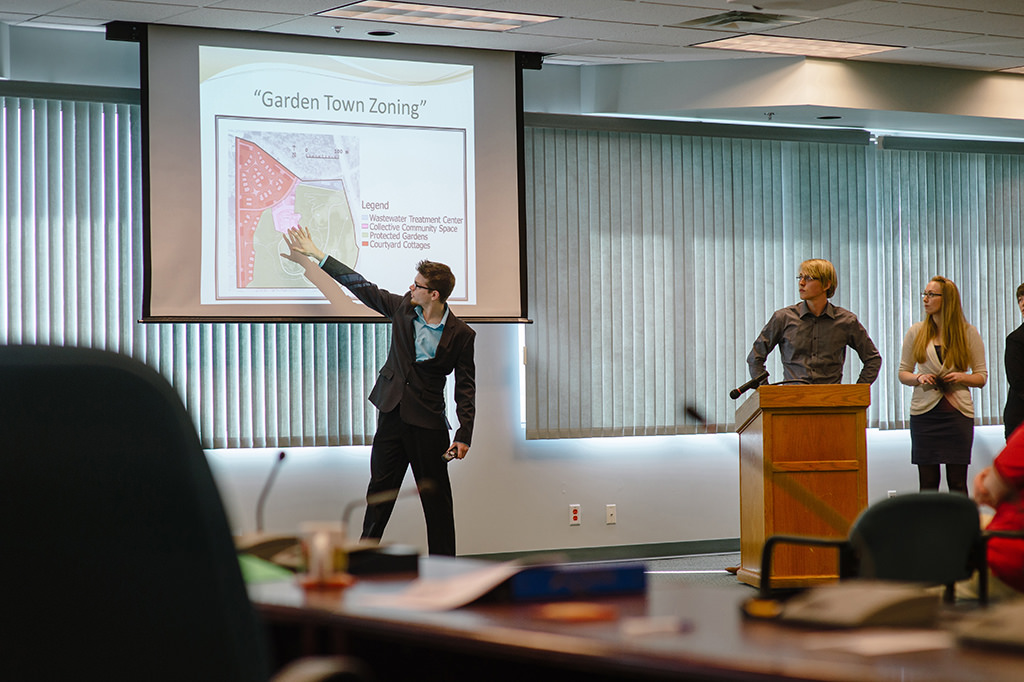By Katie Stobbart (The Cascade) – Email
Print Edition: March 25, 2015

As the internal character of UFV changes, its physical landscape and borders also shift. Increasingly, students are being invited to guide this change.
This is part of the impetus behind GEOG 464, a studio course in urban planning to be taught this May and June by Cherie Enns. It focuses on planning the U-District, the community surrounding UFV’s Abbotsford campus.
While the idea for a U-District has been around for several years, the course aims for a more detailed, practical approach. It will include three weeks of lecture and class time, followed by a month of project work culminating in a presentation to Abbotsford City Council.
A unique feature of the course is its accessibility to students from multiple disciplines. The course will looks at food systems, indigenous culture, technology, social issues, and other aspects of community planning as they pertain to students’ interests.
Enns says the idea is for students to bring their expertise, based on their varied experiences, to the table.
“Come with your disciplinary lens,” she says, “but be prepared to think spatially. It’s that spatial element that differentiates geography [and] urban planning from the history or philosophy of education in the university.”
A multidisciplinary class can bring students with a variety of strengths and prespectives from both arts and sciences together, which works well within the broad field of urban planning. Enns notes that opening up the course to multiple disciplines is a way to ensure it gets filled, especially during the summer semester when enrollment is low.
“I want those perspectives,” she says, “but the other good side effect is it increases the numbers, which gives us a lot more synergy.”
Where hands-on urban planning opportunities at other institutions are usually reserved for graduate students, UFV doesn’t have a graduate program and therefore offers that kind of experience to undergrads more often. Enns suggests the fact that it’s available to more than just geography students may be part of UFV’s developing character as an institution.
“What’s intriguing is because of the way UFV is changing (…) our courses no longer always make sense within a [single] discipline,” Enns says. “I think maybe UFV is just going to be on the edge of more interdisciplinary offerings of courses.”
The U-District studio course follows a similar interdisciplinary offering of GEOG 464 last year, which focused on homelessness in the city; this loosely coincided with the creation of a homelessness taskforce in Abbotsford, of which Enns was a member.
Enns hopes such courses will shape the way UFV approaches education in the future — she says the traditional classroom format is not really designed for this kind of interactive engagement.
“The course speaks to the future of education: what does the interactive studio or lab space look like, or what could it look like?” she asks. “That’s what we’ll explore.”


